Bengal’s Fishermen: Through War, Famine and Partition
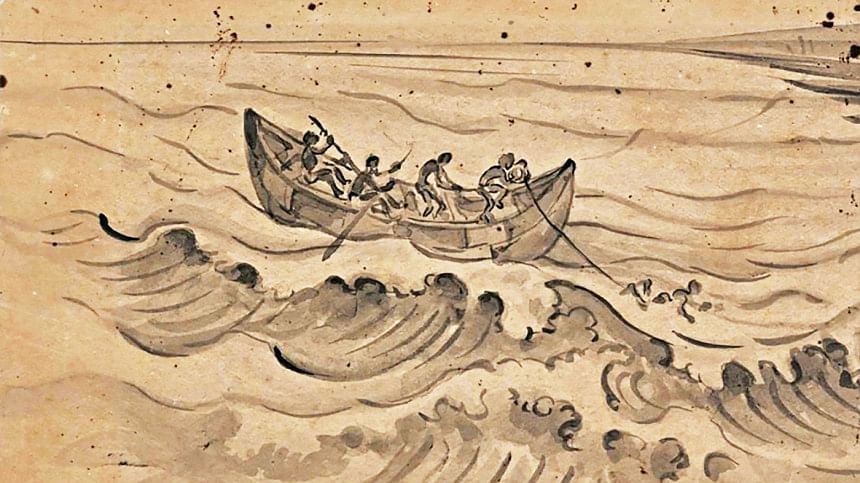
In Bengali novels and stories based on riparian life, fishermen traveling on boats from one place to another could easily identify the presence of fishermen communities on the banks of rivers. These localities displayed boats moored by the ghats, nets spread over on the ground, house sheds or bamboo stakes, and in a corner of each yard, a clay vat of gaav resin, and tar-stained pits. Fishermen and women sat in the courtyard, spinning yarn on distaff and spindle or spinning wheels, and weaving fishing nets with net needles.
As in the fictional Ketupur by the mighty Padma or Malopara on the bank of river Titash, the fluvial landscape of Bengal was dotted with the localities of fisherfolks. Many place names in Bangladesh - towns and countryside alike - still bear prefixes like Jele, Jalu, or Malo indicating the presence of fishermen. On the outskirts of Dhaka, a little ahead of Dayagunj bazaar, where in the olden days now buried under piles of construction Dholai Khal met with Grand Saheber Khal, there stood a village of fishermen called Jalia Para.
The fishermen communities of Bengal were diverse with regional variations. Apart from Malos, Kaibartas, Bagdis, and Pods, the numerically significant fishermen sub-castes, there were many other smaller and localized communities involved in fishing. H. H. Risley in his "The Tribes and Castes of Bengal" described a community living on the bank of Meghna called Lohait-Kuri, who, unlike the majority of the Bengal fishermen, rather than fishing nets used rectangular iron bars for catching fish. B. L. Chaudhuri, who in the early twentieth century extensively cataloged fish and aquatic plants of many places in India, wrote about the Kalar community of Jessore which was involved in fish pickling.
The hereditary fishermen of Bengal belonged to a lower strata of the Hindu caste hierarchy and later on became part of the broader scheduled castes category. Despite the stigma associated with their profession and the lack of social status, the fishermen were proud of their professional and social life with their distinctive customs, practices, and rituals. That does not mean they remained impervious to changes that the society as a whole and the other communities were undergoing. For economic, ecological, and reasons related to social mobility, hereditary fishermen changed the vocations of their ancestors and settled down in new professions. Chashi-Kaibartas and Malla-Metias, as their names indicate, were those who had changed their profession from fishing to cultivation. Some straddled both fishing and other professions as in the Sukdebhpur village of Titas Ekti Nodir Naam. Malo homes have fishing and tilling tools side by side.
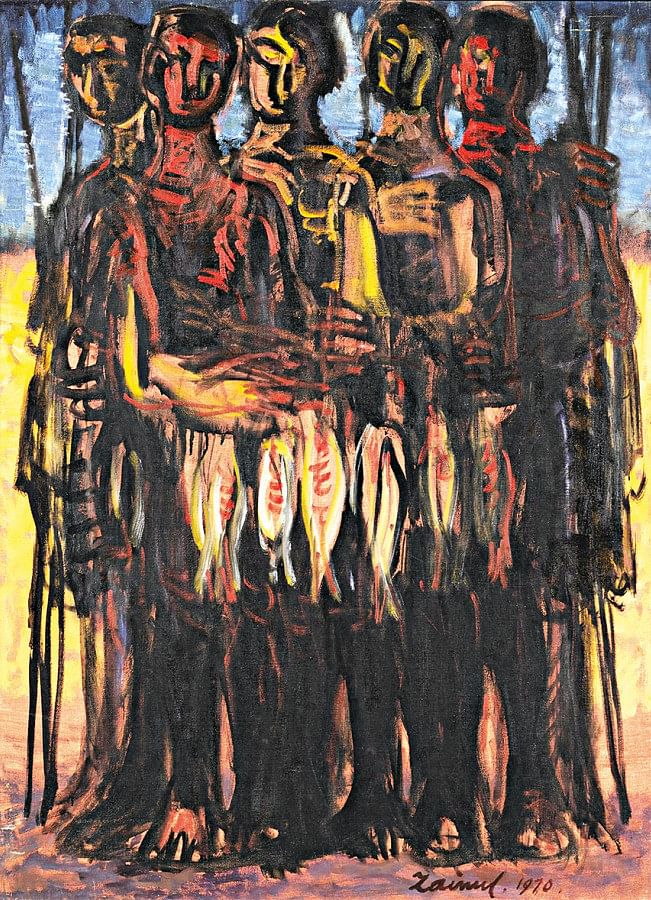
In undivided India, fishermen were most numerous in Bengal, followed by the Madras presidency; in the 1930s, these two provinces respectively accounted for 32 and 28 percent of the total fishermen in India. According to the census of 1941, Bengal had a total of five hundred thousand fishermen, and nearly three hundred thousand people were engaged in selling fish in hats and bazaars. Overall, 1.6 percent of the total population of Bengal lived on fishing and associated vocations. The percentage was higher in Dhaka, Rajshahi, and Presidency divisions, standing at 2.6 percent.
What was the condition of the fishermen and the fishing industry at the turn of the century? K. G. Gupta, ICS, conducted an inquiry into the condition of the fishery industry in Bengal in 1906. His inquiry was limited to the areas of the newly formed Bengal province, but his observations hold true for the entire Bengal. His report, known as "Fisheries in Bengal," found that "the income of an ordinary fish catcher working with parties or by himself varies from Rs. 4 to Rs. 12 per month" - undoubtedly a negligible amount.
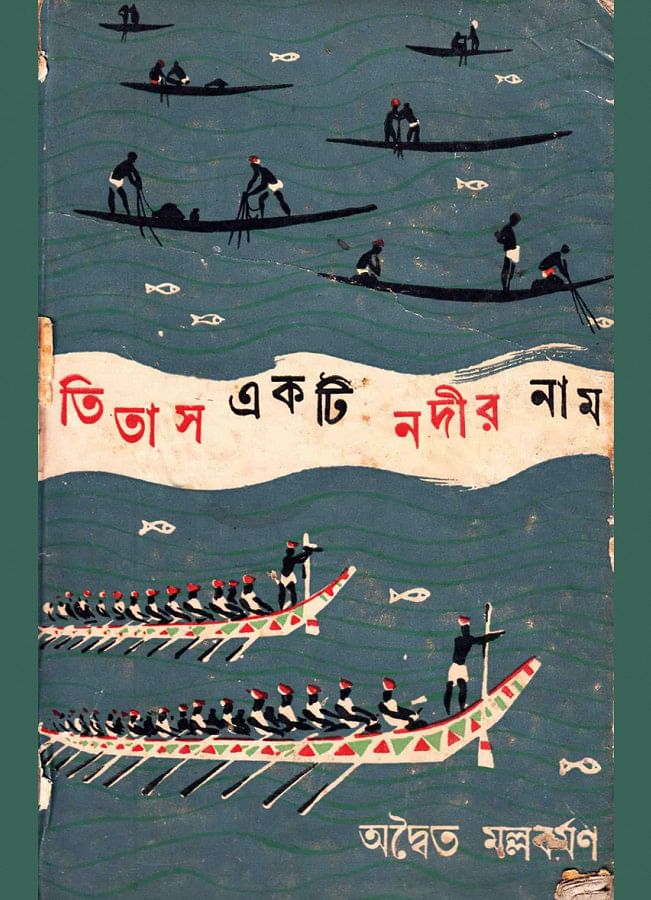
An important point he brought out was that no appreciable improvement had been made in the mode of capturing during the course of the nineteenth century. As a result, on the one hand, much valuable fish were never brought to land, and on the other hand, there was indiscriminate capture in the place of breeding fish and fry, resulting in the denudation of fisheries.
Despite producing reports on the state of the fishing industry each year by the government, there was no capital and technological investment in this field. Curing and transporting were also not being facilitated. Even until the 1960s, none of the fishing districts of eastern Bengal, the source of 80 percent of the fish in Bengal, had storage facilities. The fishing sector remained uneconomical and wasteful.
Partly due to the lack of technology and capital, unlike some Asian nations, Japan in particular, deep-sea fishing was never developed in Bengal. Bengali fishermen confined their fishing to inland quieter waters of small rivers, jheels, lakes, and odd swamps, as well as in rivers in eastern districts where they widened progressively in their urge for the sea and bear some of the noblest traits of the sea.
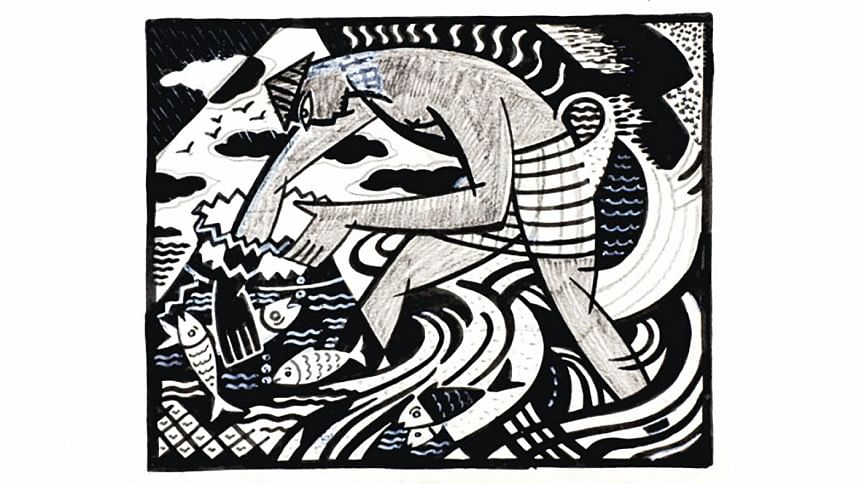
Much is known about the plight, struggles, and resistance of the peasants of Bengal under the Permanent Settlement, but not much about the fishermen. Given the abundance of rivers, jheels, and marshlands, one might think fishing in Bengal was easy and free. Fishing, too, came under the same colonial rule of property rights. Fishery rights existed in large navigable rivers, small rivers, jheels, tanks, and other areas liable to inundation.
Fishery rights in small rivers, in most cases, fell within the ambit of permanently settled areas belonging to proprietors or tenure holders. For instance, the ownership of the Tangi River was in the hands of the Madan Mohan Basak family of Dhaka. Fishermen had to lease the fishing rights in such rivers from the Zamindars. On the other hand, fishery rights in the long navigable rivers belonged in some cases to the government, and in some other cases to proprietors. There were some gray zones as well - where the rights were not clearly defined - in these cases, the establishment of fishery rights necessitated lengthy and costly litigation between the government and the proprietors.
One crucial factor determining the conditions of the fishermen was that their customary rights to fish in jheels, rivers, and waterways were being progressively encroached upon since the nineteenth century in favor of private interests. It resulted in the gradual destitution of fishermen and their eviction from their natural fisheries and paved the way for the exploitation of fishermen by middlemen. As a result, the 1920s and 1930s saw an increased number of clashes between fishermen on the one hand and Zamindars and middlemen on the other.
The report made by the Special Fishery Officer Dr. Naidu in 1940 said that more injustices resulted from the settlement of fisheries than from the settlement of land. The Report of the Land Revenue Commission, Bengal, famous as the Floud Commission report, maintained that "the actual fishermen have no rights, and there is no limit to what can be exacted from them." The report said, "there were as many sub-infeudations in the leasing of fishery rights as there was in the land revenue system." The system was arranged in a way that resulted in the supply of fish at rates that must leave a very high margin of profit to the middlemen.
Fishermen were also the source of additional income for landowners and owners of fisheries. For instance, the fishermen of Dhaka, upon returning from the river in the morning, had to give a portion of their catch to the Zamindar of Narinda. And who does not know, local zamindar babus, daroga babus of police, and the Baro Babus of the office all liked fresh fish. Moreover, in addition to Jalkar, the owners of the fisheries would impose additional taxes on fishermen based on the particular nets they used for catching fish.
Paying high rent to Zamindars and exploitation by the middlemen were not enough. In navigable rivers, harassment by the government's Irrigation Department was endemic for the fishermen. Irrigation officers prosecuted fishermen with the charge of obstruction of navigation. Not that the charge was always a fact - at times, police and petty officers brought up such charges against them for refusing to give fish free of cost. Under the Canal Act, for the offense of obstructing navigation, the fine could be fifty rupees for any one infringement, or five rupees a day for any continuing infringement - quite a hefty amount for poor fishermen.
To the eyes of the all-encompassing colonial bureaucracy, the best way to pay attention to certain departments was bureaucratic balkanization. Thus the Fishery department was separated from the agricultural department during the revenue year 1916-17 to take better care of the fishermen, and fishermen were classified as artisans in official administrative nomenclature. Committees were formed, bureaucrats went on long field trips to observe their real conditions, and detailed reports were prepared. But there were no real changes on the ground.
For the improvement of the cultivators, the government passed the Tenancy Acts, Agricultural Debtors Act, and Moneylenders Act. Notwithstanding their limitations, and dilator tactics employed by the state in properly implementing them, these acts helped alleviate some of the hardships of the cultivators of Bengal. For fishermen, however, no such measures were taken by any government.
The fishermen for long demanded the settlement of fisheries by the government and proprietor with bonafide fishermen. Unlike the peasants, the demands of the fishermen did not gain much traction with the mainstream of politics. Neither did they feature prominently in nationalist discourse as some other artisanal groups did. Their lower social status, weaker numerical strength, deprivation from education, and perhaps the tilts towards lands in the land-water dichotomy prevalent in the state and economy, worked behind the lack of attention to fishermen.
To have their grievances redressed, they wrote petitions to the governments and lobbied with the representatives. In 1937, Shrish Chandra Chakraverti introduced the Bengal Fisheries Bill. This bill was never sent to the select committee and was ultimately rejected in 1941. Another fisheries bill, the Bengal Fisheries Bill, 1940, with clauses like the settlement of fisheries with bonafide fishermen and the ending of middlemen, was agreed to be sent for circulating for the purpose of eliciting opinions but subsequently was shelved.
The erosion of rights and the lack of any protection were reflected in the number of people in this profession. While at the beginning of the twentieth century, there were approximately 1.2 to 1.5 million people involved in the occupation, in the 1930s and 1940s, their number came down to half a million.
World War II arrived in Bengal with the distant thunder of a devastating famine. The wartime reality came as a tremendous shock for the toiling masses of Bengal, but among all the social groups, fishermen were the most vulnerable. The gearing up of the economy for the war effort led to an acute scarcity of essential goods and high inflation. This economic situation deteriorated manifold in 1940 and 1941. In that condition, boat and net-making materials such as yarn, tar, wood, and iron became rare and costly.
What was most ruinous with far-reaching consequences for Bengal and its fishermen was the scorched earth or "denial policy." To ward off an impending Japanese attack, in 1942, the government decided to withdraw, sink, and remove boats capable of carrying more than 10 passengers from the area lying south of a line running from Chandpur on the east to Kharagpur on the west. This vast area was also the area where most of the fishermen lived, and fisheries were situated. In an official account, by November of that year, out of almost seventy thousand registered boats, two-thirds were either requisitioned for military use or sunk, destroyed, or taken to the reception stations.
The impact of the denial policy on the economy and how it resulted in the famine of 1943 is well known. The fishermen of Bengal were among the hardest-hit groups by the famine of 1943. Important surveys conducted on the famine by P. C. Mahalanbish, K. P. Chattopadhyay, and Ramkrishna Mukherjee, as well as Karunamoy Mukherjee, revealed that fishermen were most severely affected by the famine. The Famine Enquiry Commission Report for Bengal, though stingy in acknowledging the number of deaths and the reach of the famine, acknowledged that among the artisans and craftsmen, fishermen bore the brunt of the most.
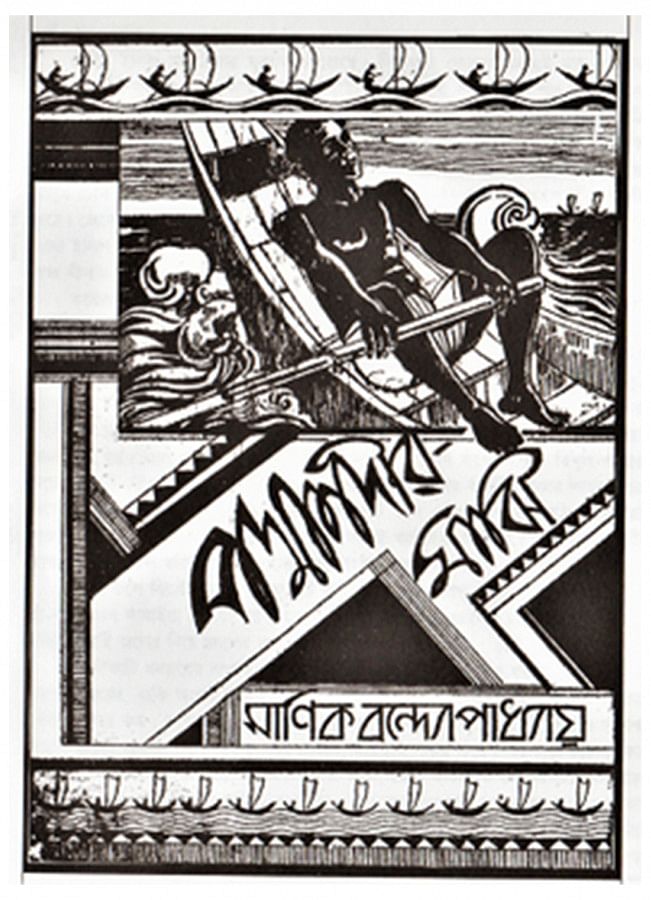
For the poorer section of society, the famine lingered beyond 1945, more so for the fishermen. Thousands of boats requisitioned and taken to the reception stations were not returned or were damaged beyond repair upon the end of the war. Even in 1947, the government had not reconditioned more than ten thousand boats. In an economy with an acute shortage of commodities and high inflation, destitute fishermen were in no position to buy fishing materials. The budget for the fishermen under the Famine Recovery Scheme was few and far between, and the actual allocation was even smaller. Hardly would fishermen be able to make or repair Jagat Ber, a one-mile-long net, most commonly used for fishing in big East Bengal rivers.
The reality was reflected in the drastic plummeting of the annual catch of fish in the province. The government did not have any exact figure for the yearly output of fish, but the Fish Marketing Report for the last few years of undivided Bengal showed that the annual catch was not more than twelve thousand tonnes. This dismal situation shows not only the pathetic economic condition of the fishermen but also indicates the abysmal condition of nutrition for the masses, for whom fish was the main source of protein.
Most of the fisheries of undivided Bengal were situated in East Bengal. In the pre-partition days, 80 percent of the fish supply to Kolkata was sourced from eastern Bengal districts. While in Punjab and Kashmir, fishermen were mostly Muslims, in Bengal, they were predominantly Hindus.
How did the fishermen of Bengal fare when Bengal was divided based on religion?
It has become academic common sense that in the days immediately before and following the partition, minorities from the lower strata did not migrate from East Bengal, but the immediate effect of the political turmoil was no less felt by those people. For the fishermen of East Bengal, now Pakistan's eastern province, it was not easy to migrate to India as their livelihood was tethered to this region's rivers, lakes, and marshlands. Unlike people in liberal professions, their skill was not easily transferable. The decision to leave their homestead and fisheries behind was heartbreaking as it was fraught with utmost uncertainty and danger. Still, many left their birthplace due to communal violence, discrimination, and economic compulsions.
We often do not pay attention to the impact the partition and the resultant turmoils had on people's professional lives in general and more so on hereditary traditional artisanal occupations, e.g., weaving, pottery, fishing, etc. Given the uncertainties in the wake of partition, fishermen and other artisans, whenever possible, tried to educate their young population in skills they considered more transferable. A potter sent his son to learn tailoring, and a fisherman sent his to be a goldsmith. That was a way to survive in the trying time in the land of birth or the place across the border.
The Floud Commission report recommended the state acquisition of fisheries along with the Zamindari lands. The East Bengal State Acquisition and Tenancy Act, 1950, abolished rent-receiving interests in fisheries. The abolition of intermediate interests in Jalmahal and leasing them out to the bona fide fishermen was a long-standing demand.
However, the benefit of state acquisition did not go to the fishermen. The middlemen, between the state and the bona fide fishermen, remained intact, and new middlemen emerged to replace the old ones. The social and economic trends that the partition and subsequent state formation unleashed benefited the Muslim big peasants. Upon the abolition of superior interests, this group became prominent in the fisheries. In Ayub's period, these interests were institutionalized and consolidated through an export-oriented commercialization of fisheries.
In the 1950s and 1960s, when there was a fitful low-key trade war going on between India and Pakistan from time to time, fish was one constant item regularly exported from East Pakistan to India. Additionally, fish was black-marketed to Kolkata. The increase in exports benefited the newly emerged local non-fishing businessmen, who had the money, power, and access to government licenses and leases. It marginalized the traditional fishing communities further.
Due to the marginalization of fishermen and export-oriented fishing, there was a regular shortage of fish in local markets throughout the 1960s. After the export, whatever little was available in the market was bought by the well-off section of society and expensive hotels and restaurants. Newspapers in East Pakistan in the 1960s frequently published news items and editorials about the dearth of fish in a land of fish. To Patrick Hill, an aid worker living in East Pakistan in the 1960s, it was incomprehensible that with such an abundance of water, this land should have fish shortages.
The material constraints due to high prices that fishermen faced worsened during the Pakistan period. In 1952, the price of cotton yarn shot up to 60 rupees from 30 a year ago. The distribution and rationing system for fishing equipment broke down completely. Only influential non-fishing people with money and access to the government could secure fishing materials and lease the fisheries at the cost of bona fide fishermen. The fishermen of this land, bent and broken under the weight of centuries, became more at the mercy of the middlemen. Towards the end of the 1960s, Daily Sangbad commented that due to the exploitation of the middlemen, like the jute cultivators, the fishermen of Bengal too had reduced to a skeleton. Many left for India, and those who stayed behind in a communally charged atmosphere lived under the bat wings of fear.
If we want to talk about the fishermen of Bengal, we need to take into account the hydrological problem. The drying up of canals, lakes, and minor tributaries was detrimental to the livelihood of the fishermen. The impact of a thoughtless fluvicidal built environment driven by profit and surplus extraction has a long history in Bengal. What began with the construction of railways and its paraphernalia continued and worsened in Pakistan through reckless urbanization and industrialization.
Mohammad Afzalur Rahman is currently pursuing his PhD at Jawaharlal Nehru University. He can be contacted at [email protected]

 For all latest news, follow The Daily Star's Google News channel.
For all latest news, follow The Daily Star's Google News channel. 


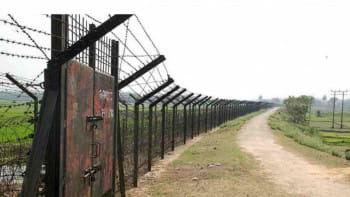
Comments